
All categories
Featured selections
Trade Assurance
Buyer Central
Help Center
Get the app
Become a supplier

(1110 products available)













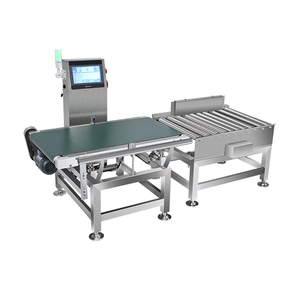

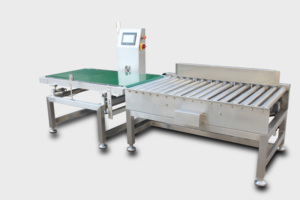

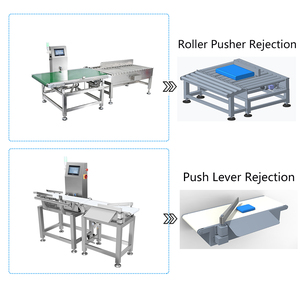
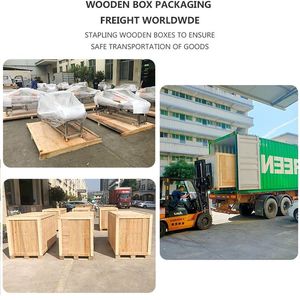















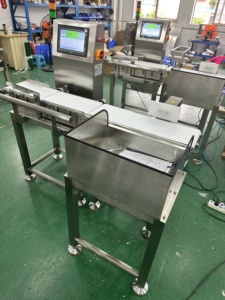
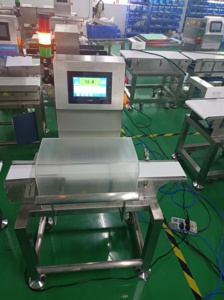


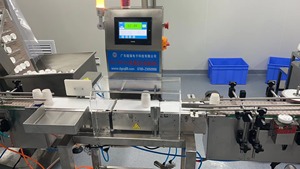





Check weight machines are essential in quality control as they ensure that packages and products meet appropriate weight specifications. They come in various types because the manufacturers use them in role-fitting weighing and detecting weight-related problems in a production line. The following types of check weighing machines can be considered:
These check-weighing machines weigh the product when it's doing stationary work, and this is often done in manual or semi-automated operations. The product's load cells and sensors will ensure it is accurate without weight redistribution. It is ideal for small-scale operations that do not weigh large bulk items.
Also called a conveyor belt, a dynamic check-weighing machine measures the moving product consistently. It incorporates quick weight measurements in bulk during mass transfer operations. This machine is commonly used in large production lines that require speed and efficiency.
They are used mainly because of their high efficiency in bulk handling. The multihead weigher consists of many hoppers that assist in the product's quick and accurate portioning. The retail check weight machine combines multihead weighers with dynamic check-weighers for accuracy to increase speed. They are mainly used in the food and pharmaceutical industry.
These are smaller, portable machines meant for usage in flexible working places. Such machines can be moved from one working site to another and give accurate static check-weighing results. Benchtop check-weighers are suitable for small-scale businesses doing small batch processing.
These are larger, fixed machines meant for integrated usage in huge production lines. They examine the weight of the produced items for quality control and conformity to the standards. It is critical to integrate these in-line check-weighers with various sensors and conveyors to enhance efficiency and precision.
To operate check-weight machines on the production line, one needs to have significant requirements and maintenance instructions for optimal operation. One must also pay attention to the key factors that assure this machine works efficiently:
Many factors must be considered when purchasing a production line check-weight machine. Below are some key considerations that would help make the right decision:
The first consideration is what the industry actually needs. The production needs define the type of check-weigher that has to be installed. It also includes the ideal weight range, required speed, and type of product. Large production lines would favor dynamic check-weighers or multi-head weighers, whereas small would favor static or bench top.
Check-weighers' accuracy and precision are important for maintaining product quality and compliance. The weight variance definition specifies how the machine can deviate from the ideal weight to be more or less accurate. This minimization of inaccuracy also minimizes wastage and keeps the standard. Consider machines with greater sensitivity and a lower level of weight fluctuation.
It is also critical to consider integration possibilities for the type of check-weigher selected with the balance of the production line elements. The selected check-weigher should work well with the already existing conveyor belts, sensors, and control systems. It should also be compatible with the software used in production line monitoring. Poor integration can lead to inefficiencies and even disruptions.
That means asking about any other concerns of future maintenance and how easy it will generally be to maintain the check-weighing machine before one purchases it. Regular maintenance is critical for the machine to work as it should. Check-weighers require frequent cleaning, and some may need to be closed for calibration. This affects the output. One needs to understand their maintenance needs, which might affect the production line.
For the first check-weigher, it will be a more long-term investment on a much larger scale, with costs considering reliability, efficiency, and what it is. Will it really perform like it is supposed to in the production line? Will it be able to withstand the rigors of long production working hours? Cost should cover all working costs over the working life of the machine, direct and indirect. Intangible costs could include how hard it is to train operators on that specific machine.
Food and beverage companies have to be careful about the weight of the food products in the production line. The weight machines here will ensure quality control and help detect weight variation. Check weight machines help avoid underweight packages that may not offer the customers satisfaction or overweight packages that may require the businesses to incur extra costs on the package.
Pharmaceutical products, for example, tablets, capsules, and other medications, should have the correct weight. They mostly use check-weighers during the packaging process to make sure that all products are packed onto the required weight. This does not only help comply with legal requirements but also promotes safety and efficacy.
There is a lot of packaging of creams, lotions, ointments, and other treatments going on, which requires accuracy in weight for the packaged goods. Check weight machines are major contributors that ensure packaged products use weight conform to the label information. They also help in making quality control and reduction of wastage when they are combined with proper surveillance.
As for the packaging industry itself, it handles huge outputs, thus necessitating the use of dynamic balance machines to weigh on the fly. Punching out any overweight or underweight products is done by the check-weighers used in this industry. This combines with others to reduce the expense on the materials used to package and conform to the legislation set.
Manufacturing hardware products like batteries, electronic gadgets, or mechanical parts have to be checked for quality control. These parts are attached with check weight machines that detect weight inconsistency, ensuring that the equipment performs as it should and increasing its durability.
Frequent inspections on the sensors and load cells, machine calibration, and cleaning to remove product residue are some ways to maintain its working condition. Outdated software should also be updated, and the machine should be well-covered to ensure dirt and moisture do not get to it.
Speed, accuracy, weight range, and grade of protection are notable features. The producing industry should use machines with efficient sensors to get accurate readings, resistants to water and dust, and handle the weight of huge products.
They can function at extreme temperatures, but the manufacturer's specifications must be observed. Extreme working temperatures may affect the machine's components, which may, in turn, reduce its operating efficiency. Some of the manufacturers have come up with enclosures for these machines to protect them from extreme working temperatures.
Certainly, there are machines designed to be used for both static and dynamic stages of weighing. They are mainly flexible multi-weighers who use both kinds of weighing at the same time to suit the different needs of the producing industries.
Yes, but they have to be properly enclosed to enable them to work outside effectively. The environment outside can be dusty and humid; hence, adequate environmental protection is required.